Beverage Industry Terms
100% Juices
Juice that is directly squeezed from a fruit or vegetable. Can be made from juice concentrate reconstituted with water and certain other ingredients (for example, vitamins or minerals) as prescribed by law.
Ace K/Acesulfame Potassium
This is a low-calorie sweetener that contains no calories and is 180 to 200 times sweeter than sucrose. It is commonly known as Sunnett® or Sweet One®.
Aluminum
The most common beverage package is the aluminum can. Aluminum is an ideal material for beverage containers because it is light weight, can withstand a lot of pressure and is 100 percent recyclable.
Ascorbic Acid
An ingredient in soft drinks that functions as an antioxidant preservative, flavoring agent or vitamin enhancer.
Aspartame
This is a low-calorie sweetener that is 180 to 200 times sweeter than sucrose. It is thought to have a more natural sugar taste. It is commonly known as NutraSweet® or Equal®.
B Vitamins
B-group vitamins are essential nutrients that play an important role in energy metabolism.
Black Tea
Black Tea is oxidized more than other tea varieties. Since black teas use dried oxidized tea leaves, they generally have stronger flavor and contain more caffeine than some other teas.
Bottle Bills
A bottle bill mandates a minimum refundable deposit on specified beverage containers.
BPA
Bisphenol A . A chemical found in some plastic consumer products as well as the epoxy liners of virtually all food and beverage cans.
Caffeine
Caffeine is a natural substance and mild stimulant found in coffee beans, tea leaves, kola nuts, cocoa beans and other plants. Both natural and manufactured forms of caffeine are safe ingredients that consumers have enjoyed in many beverages around the world.
Canned Juice
Fruit or vegetable juice that has been heated and sealed in cans to provide shelf life for an extended period of time. Canned juice should be refrigerated after opening in a container other than the can it came in and consumed within one week.
Caramel Color
A coloring agent with a moderating effect on the soda flavor.
Carbohydrates
Carbohydrates are the human body’s main source of energy. Our bodies break down carbohydrates during metabolism to release energy. During physical activity, carbohydrates are used to provide energy and should be replenished to have optimal performance.
Chilled, Ready to Serve
Juice made from frozen concentrate or pasteurized juice. It is packaged in paper cartons, plastic or glass containers.
Citric Acid
Specific type of flavoring agent used in citrus soft drinks.
Colors
Color is important to taste perception as it effects our psychological impression of food. Many food and beverage products use colors from both natural and synthetic sources. Colors are used in beverages to offset natural color loss due to exposure to light, air, temperature extremes and storage conditions and to enhance colors that occur naturally in products like juices. Finally, colors are used to make some products more fun and exciting.
Comprehensive Recycling
Comprehensive recycling efforts seek to address all recyclables in the waste stream (newspaper, cardboard, aluminum, glass, etc.), rather than singling out one product.
CSD
Carbonated Soft Drink
Curbside Recycling
These programs allow residents to place recyclables in a recycling bin/container to be picked up as directed by their local municipality. Curbside recycling is a convenient, proven and cost-effective way to encourage recycling of all recyclables.
Deposits
A deposit tax mandates a refundable deposit on specified beverage containers.
Diet CSD
Diet Carbonated Soft Drink
Electrolytes
Electrolytes are salts that are found in the body fluid, tissue and blood, and are essential to proper hydration as these salts are lost during exercise or in the heat. Common electrolytes include: sodium, chloride, potassium, calcium and magnesium.
Energy Drinks
Energy drinks are novelty refreshment beverages. They may contain a variety of vitamins and minerals, caffeine, taurine and other ingredients.
Flavors
Flavoring agents enhance the taste of foods and beverages.
From Concentrate
This refers to juice manufactured as a frozen concentrate and/or reconstituted from concentrate.
Frozen
Juice that is packaged and frozen without pasteurizing or further processing Is called “frozen.”
Frozen Concentrate
This juice has been concentrated and frozen. It is ready to be consumed after reconstituting with water per the instructions on the container.
Fructose
Fructose is a simple sugar, which can be found naturally in fruits and also is a component of both sucrose and high fructose corn syrup (HFCS).
Ginseng
Ginseng is a perennial herb that can be found in some energy drinks and ready-to-drink teas. There are two different herbs commonly called ginseng: Asian or Korean ginseng (Panax ginseng, also known as Chinese ginseng) and American ginseng (Panax guinguefolius). The two types are closely related. Panax ginseng is one of the most commonly used herbal ingredients. Ginseng has been safely used as a tea in many cultures for hundreds of years.
Glucose
A simple sugar that is the main energy source for the human body.
Green Tea
Green tea contains the highest concentration of antioxidants called polyphenols. Green teas have a slightly grassy flavor and less caffeine than black teas.
Guarana
Guarana, an ingredient in some energy drinks, is a shrub or small tree that grows in South America. Extracts of the plant, fruit or seed of the fruit may be used to provide flavor and also may contain caffeine and other compounds. Gurana naturally contains levels of caffeine ranging from 3 to 5 percent by dry weight. However, it should be noted that these levels are not always found in the finished energy drink product.
HFCS
High Fructose Corn Syrup is a caloric sweetener. This liquid sweetener is similar to sucrose (table sugar) in chemical composition, calories and sweetness, but is made from corn. HFCS contains no artificial or synthetic ingredients or color additives and is used in products ranging from cereals and meat products to beverages and condiments.
Juice Drink
A drink that contains any amount less than 100 percent juice. A juice drink also may contain sweeteners and water. These beverages also can be called juice cocktail, punch, drink, sparkler, blend and beverage. Under U.S. law, manufacturers are required to list the total percent juice content just above the nutrition facts panel of juiced and diluted beverages.
Juice in Aseptic Containers
This is a shelf-stable product. It is pasteurized juice or juice from concentrate packaged in sterilized containers or preserved by a specific sterilization technique.
Low-Calorie Sweeteners
Also known as sugar substitutes, these sweeteners give foods and beverages a sweet taste without the calories.
Neotame
This is a sugar substitute, which contains no calories. It is 7,000 to 13,000 times sweeter than sucrose.
Not from Concentrate
This juice is from the fruit or vegetable after it is squeezed. It has never been concentrated.
Oolong Tea
Oolong teas are dried and oxidized for about half the time as black tea. This traditional Chinese tea shares a flavor profile more robust than green tea but not as powerful as black tea.
Pasteurized Juice
Juice that has been heated (pasteurized) to increase its shelf life, ensure its safety and minimize nutrient loss.
Pay-As-You-Throw
Pay-as-you-throw (PAYT) programs provide direct economic incentive to reduce waste by charging households for waste collection based on the amount of waste they throw away. Some communities charge residents for each bag or can of waste they generate, or by the weight of waste. PAYT programs encourage residents to create less waste and increase the amount they recycle.
PET
Polyethylene terephthalate is a common plastic used in many beverage, food and other liquid containers. It is lightweight, durable and 100 percent recyclable.
Phosphoric Acid
This flavoring agent in soft drinks is a preservative that provides tartness.
Potassium Benzoate
An ingredient in soft drinks that acts as an antimicrobial preservative agent against bacteria, yeasts and molds.
Redemption Centers
Private businesses that work with distributors of carbonated beverage to collect redeemed bottles and cans in states that have bottle bills.
Saccharin
The first sugar substitute which is commonly known as Sweet’N Low®. Saccharin contains zero calories and is 300 to 500 times sweeter than sucrose.
Satiety
The state of feeling full or satiated.
Single Stream
A recycling system in which all recycled objects are mixed together in the recycling truck instead of being sorted into separate commodities first.
Sodium
A common electrolyte found in sports drinks. that plays an important role in maintaining fluid balance and reducing the risk of both whole-body cramps during exercise and hyponatremia, or low blood sodium.
Sodium Benzoate
An ingredient in soft drinks that acts as an antimicrobial preservative agent against bacteria, yeasts and molds.
Sodium Citrate
A soft drink ingredient that acts as a buffering acid that keeps soft drink pH low to maintain freshness.
Sports Drinks
Sports drinks are functional beverages, which often contain electrolytes and were created to help athletes and other active people hydrate before, during and after vigorous exercise.
Squeezed Juice
This term means the juice was extracted from fruit or vegetables and packaged in a variety of appropriate containers. It is not pasteurized and is kept under refrigeration.
Stevia
Stevia is a natural sweetener with zero calories. More than 200 times sweeter than sugar, its sweet taste is due to two components in its leaves: stevioside and rebaudioside, known as Reb A. This natural sweetener allows consumers to enjoy foods and beverages without the calories of sugar and is safe for those with diabetes.
Sucralose
This is a low-calorie sweetener that is 600 times sweeter than sucrose. It is commonly known as Splenda®.
Sucrose
Table Sugar.
Sugar Substitutes
Also known as low-calorie sweeteners. These sweeteners give foods and beverages a sweet taste without the calories.
Taurine
Taurine is an amino acid that occurs naturally in the human body and is involved in many of its vital functions. Taurine also naturally occurs in a wide variety of foods such as scallops, fish and poultry.
Tipping Fees
Price charged to waste haulers to deliver municipal solid waste to a landfill, waste-to-energy facility or recycling facility.
Vitamins
Vitamins are nutrients required for essential reactions in the body. Vitamins can act both as catalysts and participants in the chemical reactions that keep the body functioning. We can obtain vitamins we need from the foods and beverages we consume.
White Tea
White tea is made from the buds and young leaves of the Camellia sinensis plant. Like green tea, it is minimally oxidized; therefore, it retains more phytonutrients. White teas may have a slightly sweet flavor and even less caffeine than green teas.
Resources
View more helpful resources such as industry terms, fun facts and links.

